Full disclosure: I’m a nerd. Specifically, in this case, a nerd for medieval literature, and a massive nerd when it comes to A Song of Ice and Fire (ASOIAF). When I get the chance to talk about the two together, many many opinions happen.
With that in mind, let’s talk about courtly rhetoric: the word “courtly” takes on an ideological character, particularly when the focus is on “courtly” virtues and “courtly love” as the central quality of a social ideal. This rhetoric is the thread that runs through texts surrounding courts in medieval Western European literature (particularly in Old French Romances, such as Arthuriana and related texts), and the conventions expressed in these texts, that have so shaped our understanding of love and the self, bleed into the rhetoric embedded in Westerosi culture (which, after all, takes much of its inspiration from pre-modern Western Europe).
For this exercise, we will be taking Sansa, Lyanna, Elia, Cersei, and Brienne as our examples, which will inform our foray into this field. (This will focus on Westeros: partly because it is more explicitly based on Western Europe, therefore neater comparisons can be made; partly because the series focuses on Westeros, so there are more developed characters to analyse rather than cultural monoliths).
But first, a spot of mythbusting: many feminist scholars have claimed that the relationship in fin’amor (“fine” or “high” love, the basis for what we now call “courtly love”) reflects an imbalance of power that is in the lady’s favour, as she dominates the knight and expects absolute submission. However, this ignores part of the purpose of this trope: that is, that this mistress-servant relationship is constructed in order to civilise knights (who, as Sandor Clegane would tell us, would otherwise go around murdering and — probably — raping civilians). Courtly romance was a civilising force for these highly-armed and very bored knights; but it was also a means to civilise female sexuality.
Simon Gaunt, the London-based Professor, tells us that “Female characters in romance are not real women, but figures within a male discourse” (p.71-2), and this nuance when considering the status of women in courtly texts is an important one. For example, the women in these romances very rarely, for one reason or another, choose their lovers: they are chosen by their lovers based on their sexual attractiveness or other parts of their exemplary femininity, whether they want this contact or not. Women are not allowed to choose whether or how they are pursued and, if they do not accept this “profession of love”, they are branded murderers (because of the contemporary view of the physiological effects of unrequited love—the pining lover would wither as if poisoned until he either died or had a token of his lady’s affection bestowed upon him).
An important example of this is in Le Châtelain de Coucy et la Dame de Fayel, in which the Lady of Fayel, although she recognises the exemplary chivalry and courtliness of the Castellan of Coucy, refuses his love because, well, adultery is wrong according to every social and religious norm she holds dear. Here’s the Castellan’s response:
“Se muir, vostre ame empeecie / En sera, ce ne poet falir, / Quant pour vous m’estera morir” (‘If I die, the blame will certainly rest heavily on your soul, since you will be responsible for my death’ ll. 526–528, translation mine)
This is emotional blackmail of the highest order, and although the Castellan seems to suggest that she has all of the power, we modern readers can see that that is blatantly not the case. No matter how many times the Lady of Fayel refuses, the Castellan implores her still more urgently, until she eventually assents.
So, in the first of three analyses, we will step away from the idea that chivalry, that placing women on a pedestal rather than allowing them to have flaws, is a positive thing. And that is something that GRRM is able to do (mostly) successfully, by showing its toxic influence on the interpersonal relationships at work in ASOIAF (and, because feudal politics relies so heavily on the personal, we can see that chivalric values affect every aspect of life).
Charmed and gracious: Sansa
Sansa Stark is our first clear example of someone who, at the start of the series, fully buys into the idea of the perfect chivalrous knight and the perfect courtly lady — her head is full of stories of knights, both fictional (in the case of Florian) and real (in the case of Barristan the Bold), and this completely shapes her entire worldview. She believes in perfect weddings and handsome, loving husbands and a small army of children, which influences the choices she makes and the consequences for those choices. In the world Sansa believes in (in the world that Westerosi society and her own insular court tells her is true), there is only just violence, perpetrated by noble knights in the quest of honouring the Seven Gods and protecting the vulnerable.
The scales are ripped cruelly away from Sansa’s eyes after her father’s execution and after she sees that not everyone who is handsome is a good man, that Queens are not always virtuous and kind-hearted, and that there are not always happy endings. This is important—since it forces both Sansa and the reader to look beneath the surface and consider the substance behind rhetoric which apparently stresses a quest towards moral perfection but which, in reality, rewards those who appear to conform.
Sansa has, as far as courtly rhetoric goes, been dealt a killer hand from the outset: a young maiden from one of the most noble lineages in Westeros and described as stunningly beautiful; the only thing Sansa lacks, from a medieval Western European perspective, is blonde hair (since red-haired women were at best morally dubious and at worst witches and demonesses). Let’s look at a description of Sansa from the perspective of her now-husband, Tyrion Lannister:
“Her hair was a rich autumn auburn, her eyes a deep Tully blue. Grief had given her a haunted, vulnerable look; if anything, it had only made her more beautiful. (ASOS Tyrion VIII, emphasis mine)”
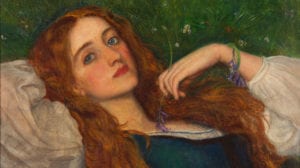
The fetishisation of grief and the perversity of Tyrion taking a degree of pleasure in Sansa’s pain is one thing; but, for now, we’ll focus on other aspects of the quote. Sansa’s hair, while not immediately conforming to typical Western European beauty norms, is described in terms which would grace any courtly text: the richness of colour, the link to the idea of status (in a more obsessively realistic text, someone with red hair would be more unusual still, but I digress). Blue eyes are traditionally, in Western Europe, a sign of innocence and desirability, yes, but it is that they are Tully blue that is part of the attraction in this quotation, otherwise it would not have been mentioned. ASOIAF is a series that goes some way to deconstructing fantasy tropes (and Martin has done wonderful work in chapters that don’t obviously revolve around the court, such as the broken man speech); but the focus on the nobility of Westeros, however far away from home they are, is something telling about how much ASOIAF owes to the old courtly traditions.
We can see some of this focus on nobility in Sansa’s later chapters, as Alayne: Alayne is beautiful enough, most will agree on that, but she is accessible, and in a society which fetishises the idea of what Old French terms the domna, the lady and mistress; being accessible is seen as tarnished. Knights were supposed to desire the highest-born lady they could find (as we can see in Barristan’s recollections of the Tourney at Harrenhal, the convention was to name the highest-ranking woman the Queen of Love and Beauty, unless you wanted to make a statement); then they would pledge themselves to her service, where they would pine and wish for her to become less distant and ethereal. Alayne’s encounter with Marillion, who isn’t aware of Sansa’s birth status, is indicative of this: you are worth more if you are a noblewoman, and you will be treated as a prize to be won.
Wild, willful and dead before her time: Lyanna
Full disclosure: we won’t be talking about Rhaegar. The idea that Lyanna is only interesting insofar as she relates to Rhaegar or Jon is reductive, since there is so, so, much else to talk about.
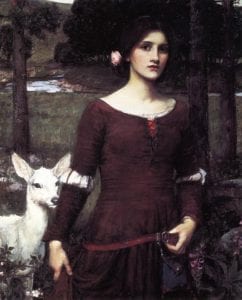
In contrast to Sansa, not everyone concurs that Lyanna was a great beauty: while Robert remembers her as “the maid he loved and lost” (ACOK Davos III), and Ned remembers her as a “child-woman of surpassing loveliness”; Maester Yandel tells us that she was “a wild and boyish young thing”, and Kevan Lannister confirms that, although she had a certain “wild beauty”, she could not have hoped to compete with Cersei. Lyanna’s lack of conformity to an ideal, beautiful, courtly lady can be, in part, attributed to her “Northernness”: Sansa and Arya certainly seem to have had more freedoms, whether wisely or not, than Margaery. She is also noted to have had the traditional “Northern” look, with straight, brown hair and grey eyes; which do not set Westerosi hearts to racing, as opposed to the ethereal Targaryens, the striking Lannisters or the Tyrells and Tullys with their curls and high cheekbones.
However, of the Dead Ladies Club (championed so effectively by Tumblr user joannalannister), she is the nearest thing we have to someone approaching a person, if only barely, rather than a concept or a half-remembered ideal. Ned talks about her “steel”, and Bran sees her duelling Benjen in the Godswood; and her relationship with Rhaegar breaks a number of societal norms. The positions are, to a certain extent, reversed: Rhaegar is the higher-ranking party (the Crown Prince of Westeros), desiring a young, relatively powerless maiden. A far cry from the ideal of the domna and the supplicant, then. And we can see that Lyanna causes, to a certain extent, warps in conventional society wherever she is mentioned in the narrative, and even after her death, with her much-noted similarities to Arya.
Indeed, we could argue that a lot of Lyanna’s reputation for overwhelming beauty is an attempt to:
- Rationalise the historical impact she has had on Westeros
- Justify Rhaegar and Robert’s personal actions
- Normalise her, making her less threatening to traditional gender roles
With regard to the last point: this is something that has happened historically with powerful women; we need look no further than Cleopatra (this series of posts on Tumblr really highlights the need for martial cultures, such as cultures based around the court of a King, to weaponise femininity and to therefore contain women who try to break the mould). If Lyanna is beautiful, she is not dangerous. If she is beautiful, she can be contained.
A Good and Gracious Lady: Elia
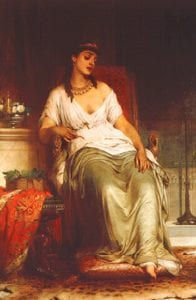
Elia is an interesting case for so many different reasons, the first among them being that courtly rhetoric rarely focuses on wives: most courtly texts end once the hero has either definitively won the love and hand of his domna (such as in Le Chevalier au Lion, the story of Yvain and Laudine, who is not even named in some versions of the manuscript) or died tragically in the attempt (e.g. as we saw earlier with Le Châtelain de Coucy et la Dame de Fayel…but let’s be honest, we all hate that guy anyway). In Western Europe at the time, the norm among the aristocracy would have been arranged marriages, as appears to have been the case with Rhaegar and Elia.
Defenders of Rhaegar will cry foul and say that he could not possibly have been asked to stay faithful because it was an arranged marriage and he “wasn’t in love”. In that case, it was also arranged for Elia, and she had to move from her home into a land with dangerous, powerful, highly racist strangers (Aerys refused to hold Rhaenys because she “smelled Dornish” – that cannot have been the worst thing he said or threatened to do)
Returning to the point, the German medievalist Joachim Bumke tells us in Courtly Culture that “For Christians, a woman was an object of veneration only in the state of untouched virginity, graced with the ornaments of chastity and purity” (p.327), and it is clearly the case that relatively few courtly texts actually spend time on married life, and that is in part due to the idolisation of the virginal, young maiden. Lyanna and Ashara Dayne are idolised as young, desirable women who will always remain thus; it is much more difficult to romanticise Elia, for various reasons:
- She was abandoned by Rhaegar (Daenerys, even though she acknowledges his actions at the Tourney were cruel, asks Barristan specifically, “Did the Dornish woman treat him so ill?” and then claims that “If Rhaegar had been happy in his wife, he would not have needed the Stark girl.” (ASOS Daenerys IV) Elia, despite having done nothing wrong and being the one who was abandoned by her more powerful husband, is seen as being partially to blame for his actions)
- She is a woman of colour; this, and the perception that many of the non-Dornish characters have of the region before the reader even sees Dorne, means that she is less sympathetic…particularly, unfortunately, for a presumed white, Western audience
- She had had children, and was more defined by motherhood than Lyanna is in common knowledge in Westeros: mothers are largely silent, in the rare cases where they appear in texts at all, and one of their functions appears to be to represent idealised femininity at the court of their husband
- She was partially defined by her disability: the disabled are at best marginalised and at worst accused of moral degeneracy (having Elia be less than physically perfect in the first place challenges a number of notions that even modern readers have about the spouses of the powerful)
Elia is a useful reminder that, while there are cases of women such as Cersei, Catelyn and Sansa who conform to courtly norms and can even thrive in their environments, as Catelyn can; those that cannot conform are erased and/or punished. If women are ever portrayed to be anything less than physically perfect, for example, the best they can hope for in courtly narratives is to die
Instead, Elia has become, in Dorne, a symbol of what was robbed from and denied Dorne after Robert’s Rebellion, rather than a person in her own right. Even her brothers, who loved her beyond measure, see her as a cause, as a wrong to be righted, rather than as a person. Was she kind? Barristan tells us she was, but a) Barristan is unreliable and b) we are shown any memories from the character herself, as we are in the case of Lyanna.
(Incidentally, I think Jaime’s fever dream, where he saw Rhaegar et al. accusing him, was a wasted opportunity – yes, Rhaegar was a paramount knight, which has implications for Jaime’s own wasted ambitions, but as the main Kingsguard knight in King’s Landing, he would have been much more involved with the city-dwelling royal family…that is to say, Elia and her children. The importance of the dynamic of protectors and charges cannot be overlooked in cultures with valorise the martial male and the docile female, and Elia’s accusation would have not only made her a presence in the narrative, not just a name; it would have also given the audience to see her and experience her as a person, which again is a powerful statement).
Now is a useful moment to point out that courtly rhetoric is just that: rhetoric. This (and the fact that interiority is only just, in medieval Western Europe, starting to become a Thing™) means that, while rhetoric surrounding courtly literature is useful to understand some of our modern conceptions of love, society and beauty norms, it cannot be applied cookie cutter-style. That said, it is partly Elia’s failure (through no fault of her own) to conform to certain standards imposed on her by Westerosi society (she is not young, nor a maiden, nor white, nor in perfect health) that means that she is treated so harshly (that and the fact that her mother had the audacity to “steal” Rhaegar from Tywin and Cersei, so Tywin felt she must pay).
Light of the West: Cersei
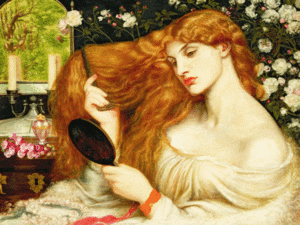
Aside from her casual cruelty, one of Cersei’s most famous traits is her beauty (although that has begun to fade as she sinks deeper into alcoholism, gains weight and ages generally—during the Walk of Shame, people insult her about her fading beauty, something that is deeply traumatic for her).
This beauty would have been just as enticing for a Western European audience, as Jon tells us: “She was as beautiful as men said. A jeweled tiara gleamed amidst her long golden hair, its emeralds a perfect match for the green of her eyes” (AGOT Jon I). The effect of language and conventions expressed most prominently in literary texts is clear here: “She was as beautiful as men said” is a clear indication of the power of language in the creation of desire, and in some courtly texts, the male lover desires his love object purely on the strength of words alone:
“Amors l’a cuit d’une estencele / de cel biau non mout pres del cuer” (“at the sound of this beautiful name [Liénor], love seized the emperor’s heart” Le Roman de la Rose, ou de Guillaume de Dole, ll. 793-794, translation mine)
For our purposes, what is most interesting about Cersei is what she is not: both within the bounds of the narrative and without. Within the story, Cersei falls short of every model of ideal Westerosi feminine-coded behaviour, except for her outward presentation. One thing that Cersei’s mere existence in the narrative challenges is the Beauty Equals Goodness trope, something that is a staple of courtly literature: the domna in the text is, in the vast, vast majority of cases, not only beautiful but also the epitome of feminine, Christian (even if she herself is not of this faith) values; even when the woman’s beauty is fantasised about, her core virtues are also highly praised. Cersei herself makes a conscious effort to live up to these outward expectations:
“Cersei smiled to see her, and Sansa thought it was the sweetest and saddest smile she had ever seen” (AGOT, Sansa IV)
“Cersei graciously granted their request” (ACOK, Sansa VI)
However, in the privacy of her own thoughts, we see another side to this apparently perfect lady:
“Who is the most fearful, the most wanton, the hungriest for favour? Who has the loosest tongue? She would need to make a point of finding out” (AFFC, Cersei II)
“If Margaery Tyrell thinks to cheat me of my hour in the sun, she had bloody well think again” (AFFC, Cersei V)
While I may personally detest Littlefinger (no, I will not call him Petyr, he’s a disgusting little man and I don’t understand why this fandom licks his boots), he makes an interesting point about Cersei: “Her strength rests on her beauty, birth, and riches. Only the first of those is truly her own, and it will soon desert her. I pity her then.” (ASOS, Sansa VI).
Beauty is a source of power in both ASOIAF and the courtly literature the series borrows so liberally from, and in ASOIAF, it is a shield from behind which Cersei can enact her own plans: “Beauty can be treacherous. My brother learned that lesson from Cersei Lannister” (ASOS, Jon XI) And in courtly literature itself, beauty is designated as an inciting force, which can inspire men to glory or to shame: “Kriemhilt geheizen; si wart ein schöne wîp / dar umbe muosen degene vil verliesen den lîp” (Nibelungenlied 1.3-4, “Her name was Kriemhild, and she became a beautiful woman; because of her, many knights would lose their lives”, translation mine).
In courtly rhetoric, however odd it may seem to our ideas of outdated gender expectations: the importance of children to a courtly lady is not overstated. When she is a mother, of course, she must endeavour to raise her child in the appropriate faith and give exceptional moral guidance, but in terms of the aim of courtly literature and rhetoric, it is secondary, and usually happens after the romance has ended.
Given Cersei’s narcissistic qualities, it is not surprising that Cersei certainly views her two eldest children as extensions of herself: the example of Myrcella is pertinent here, as she is said to have begun showing signs of Cersei’s great Lannister beauty, with “none of her nature” (AGOT, Tyrion I). Cersei thinks little of Myrcella in her own chapters: she expresses anger at the Dornish match (mostly because she sees it as a challenge to her own power, which is certainly not unheard of for medieval noble ladies, historically speaking); and she mourns Myrcella’s maiming as it coincides with the loss of some of her own idealised beauty (through weight gain and heavy alcohol consumption). So while some aspects of the courtly stereotype apply to the example of Cersei, others fall far short.
The Maid of Tarth: Brienne the Beauty
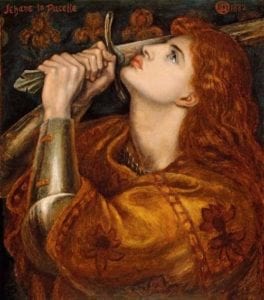
It is no secret that Brienne is basically the anti-Cersei, and another explicit challenge to the Beauty Equals Goodness trope. For context, an ugly noblewoman a) probably wouldn’t have made it into a manuscript (or if she had originally, she would have been edited out by later writers, since there wasn’t a sense of intellectual property or the “will” or “vision” of the author, as exists today) and b) if she had even existed in the narrative, she would have been a witch, no questions asked.
I think Gwendoline Christie, being the goddess that she is, has really warped people’s perceptions of Brienne: I’m not trying to be cruel when I say that Brienne is ugly, since that is the Point™, in the same way that it is the Point™ that Sandor Clegane is ugly. It provides a counterpoint to their moral goodness, and throws conventional views of the link between beauty and virtue out of the window, or at least tries to.
The challenging of societal expectations of women is a prominent theme in the whole of ASOIAF, but particularly in AFFC, where we have the introduction of the Dornish and Ironborn plots, introducing Arianne and Asha, who are fascinating in and of themselves: AFFC is a hugely important book for Brienne, as it lays the groundwork for many of the internal and external conflicts she will be forced to face. One such conflict is Randyll Tarly, who tells Brienne that “’Some men are blessed with sons, some with daughters. No man deserves to be cursed with such as you.’” (AFFC Brienne V). Strong, masculine words from someone who threatened to kill his son and heir.
Another thing that Brienne overtly challenges is the physical expectations of women in a courtly milieu, something she explicitly reflects on in her AFFC chapters, which merit a reread all by themselves. Bumke observes that stating that a woman had a “’man’s disposition’” was “the highest praise for a woman that poets and chroniclers could think of. Only in physical strength should a woman not equal a man. Otherwise she would become weird and dangerous, like strong Brunhilde in the Nibelungenlied, who struck the fear of God into the heros from Worms and was therefore cursed as the devil’s wench” (p.332).
Brienne, incidentally, describes herself frequently as “freakish” (AFFC Brienne I and VI), something Rorge hammers home in VII: “’Whore!’ he boomed. ‘Freak! Bitch!’”. This rejection by Rorge, nigh universally acknowledged to be one of the worst members of the Brave Companions and someone who the reader is not supposed to agree with on any matter, can show the reader that the opposite is, in fact, the truth: Brienne is beautiful, in that she represents the triumph, however futile it seems in the moment (here and here), of moral goodness, which is also an element of courtly rhetoric.
The act of striving towards moral perfection, usually in the service of a lady, is a key tenet of courtly discourse. The fact that Brienne performs these acts in service to Catelyn and, later, Brienne’s memory of her and her oath, is incredibly significant.
AFFC Brienne IV can be seen to highlight the nature of women as objects of exchange in male homosocial relationships (that is to say, social relationships between men):
“It was Septa Roelle who had lifted the scales from her eyes. “’They only say those things [about her beauty and grace when dancing] to win your lord father’s favour,’ the woman had said. ‘You’ll find truth in your looking glass, not on the tongues of men.’” (AFFC Brienne IV)
While this observation is cruel, Roelle makes an important point: the exchange of women is an important means of establishing kinship between two men, which is a cornerstone of Westerosi society, as can be seen through the emphasis on the Mother and Father at the heart of the Faith of the Seven and the taboo surrounding kinslaying.
However, Brienne the Maid’s rejection of a place in this view of society and social organisation can be poignantly highlighted when she thinks about her previous betrothal to Lord Caron’s younger son, and thinks about how, at this stage in her young life, she would probably be at Nightsong with a babe in arms: “It always made her feel a little sad, but a little relieved as well” (AFFC Brienne III).
This emphasis on feeling and interiority is so, so important when it comes to thinking about conventional courtly rhetoric: it is, after all, an expectation, and the feeling of relief that Brienne describes can be seen as a welcome liberation from shackles that, whether they benefit from them or not, medieval and Westerosi women have to face.

